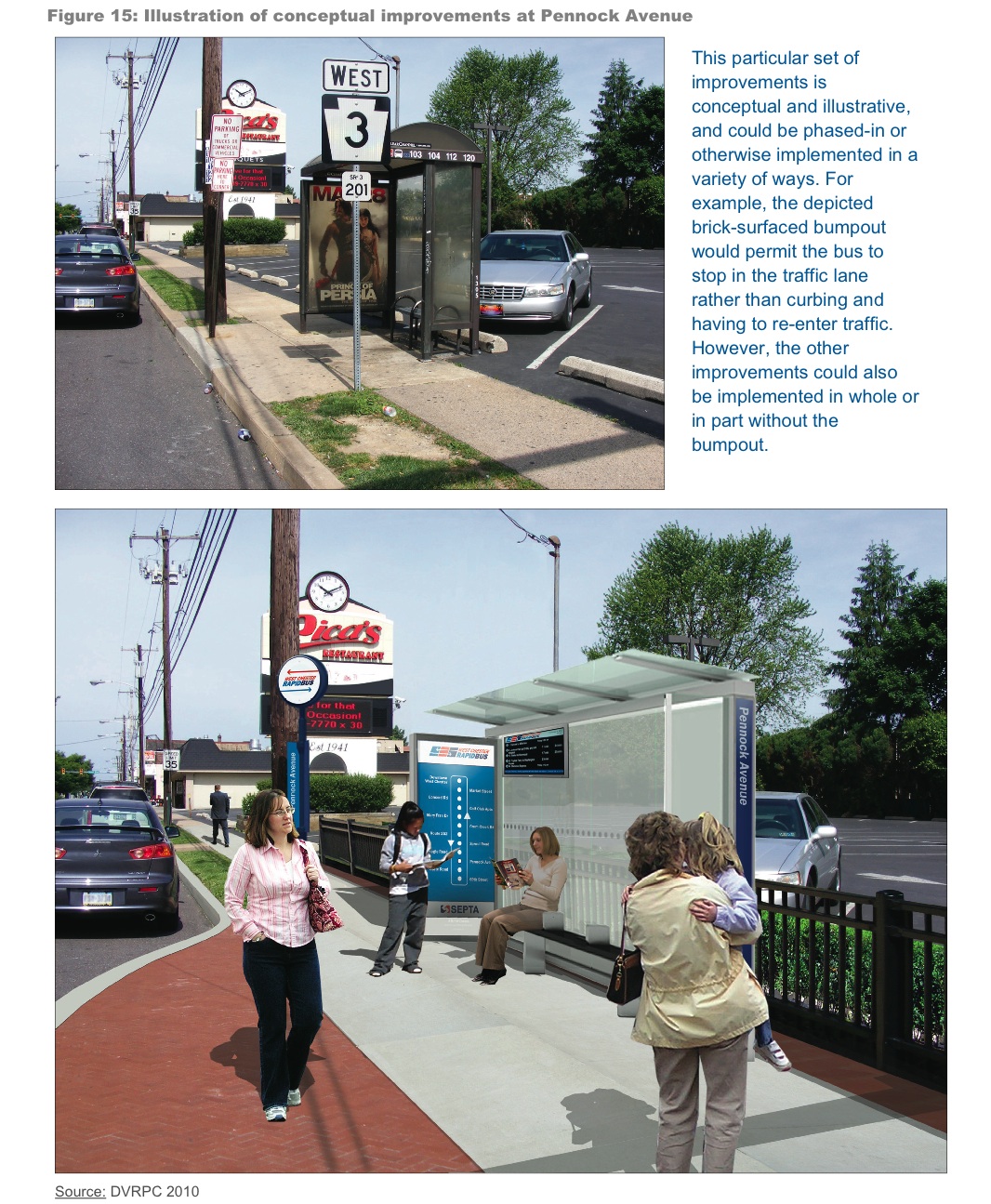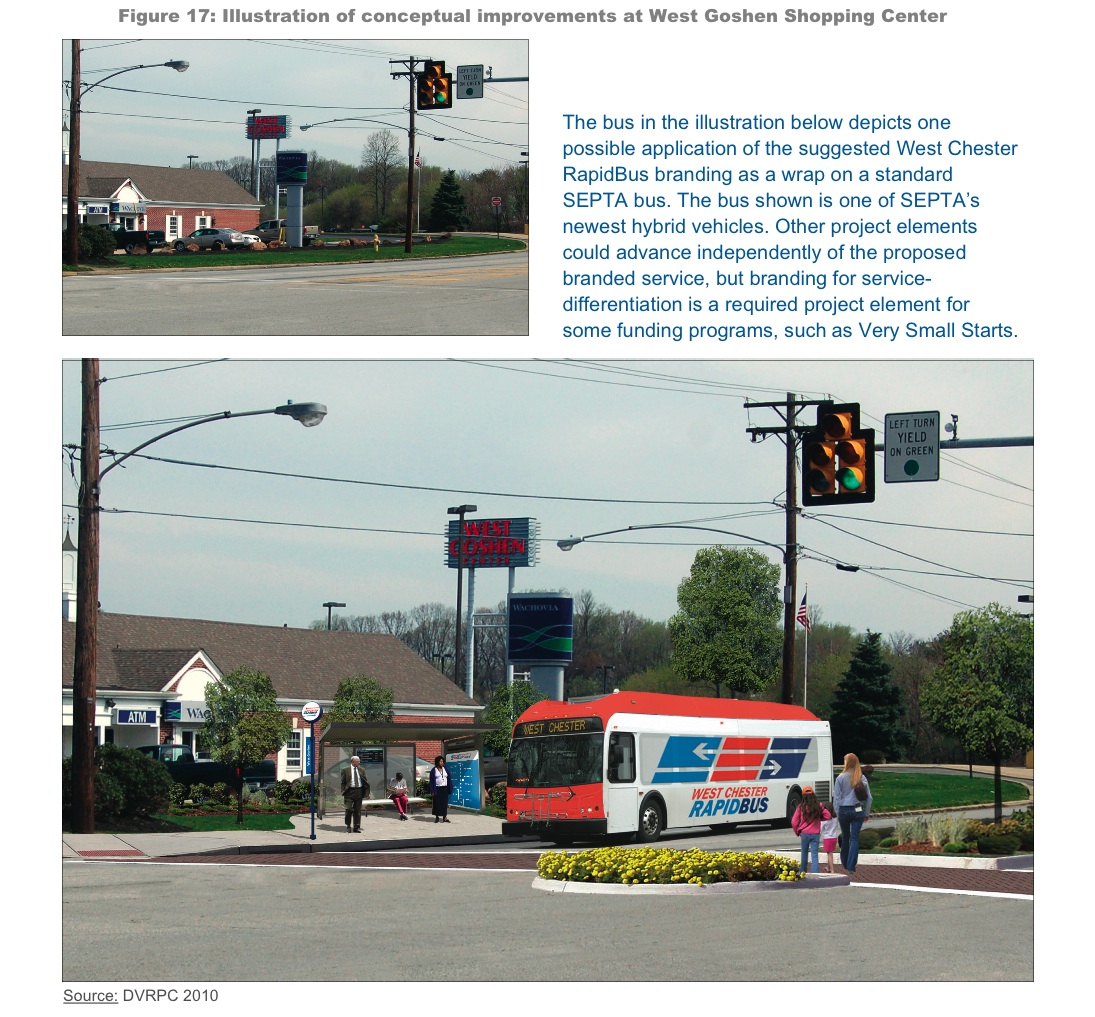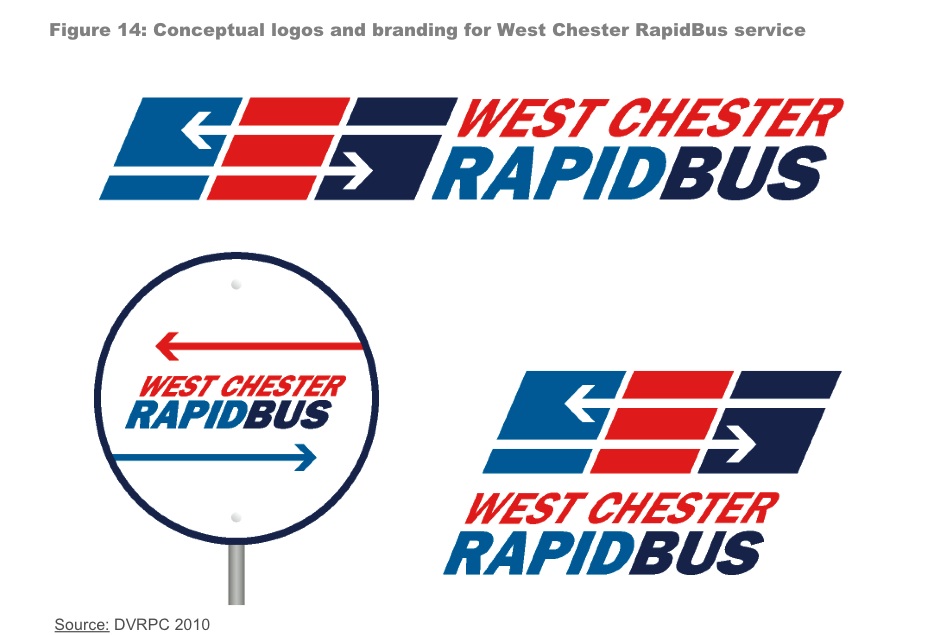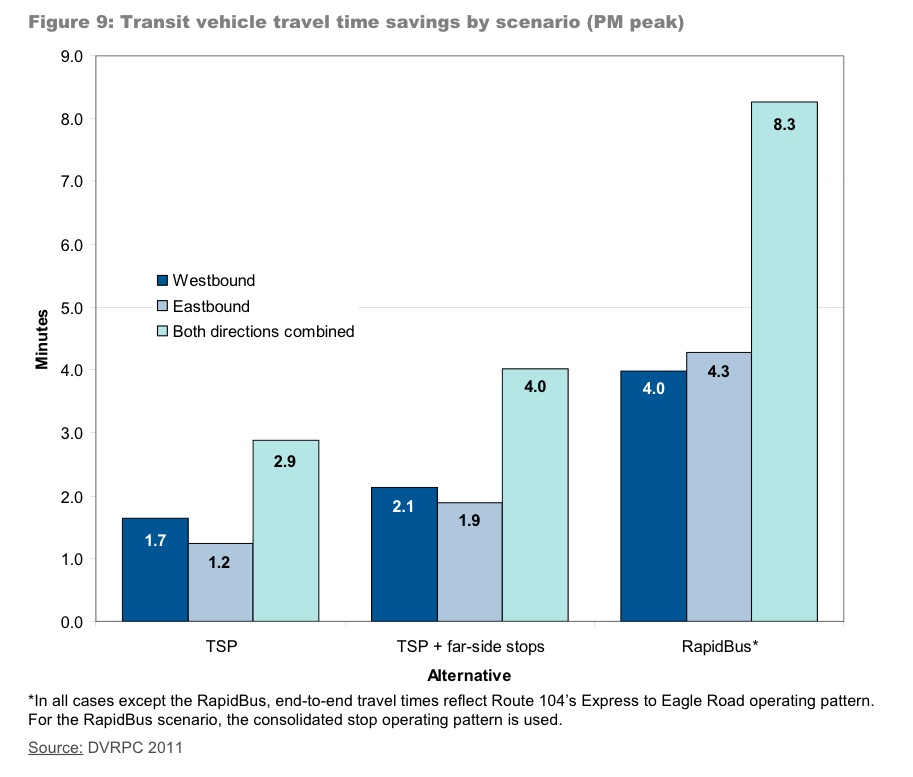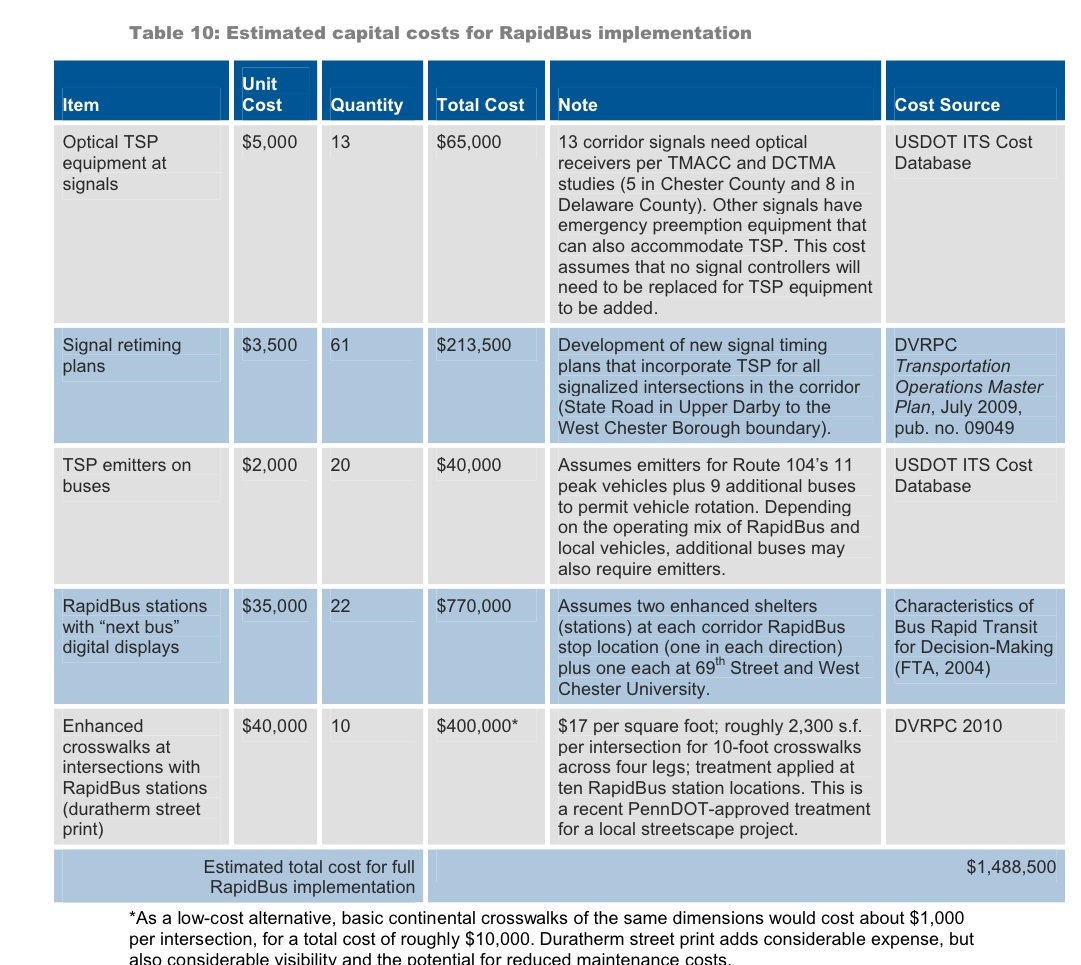Bringing BRT to Philadelphia
Bus Rapid Transit can be found in cities as diverse as Los Angeles and Santiago, Chile.
Now, a BRT-like service is being proposed for Delaware and Chester counties in a new study released by the Delaware Valley Regional Planning Commission that looks at improving transit service along West Chester Pike.
The study doesn’t propose a full-fledged BRT line ― with off-board fare collection and a dedicated right of way. Instead, it says that several relatively low-cost changes could be made to SEPTA’s Route 104 bus that would improve service reliability and make bus travel more competitive with automobile travel along the corridor.
The study, entitled Boosting the Bus, notes that the eastern portion of West Chester Pike, near 69th Street Terminal, already sees frequent bus service thanks to the six different SEPTA routes that operate along the corridor. From the terminal to State Road, for instance, buses run every 4 minutes during rush hour, providing a level of service akin to major bus routes that run through Center City.
However, service levels diminish as the road gets farther away from the city. Route 104, with half-hour headways, is the only service provided all the way out to West Chester, and was thus the focus of the report, which looked at several different levels of intervention and their projected impact on travel time and reliability.
The interventions were similar to what the city and SEPTA have tried for the Transit First program and included the installation of transit signal priority, or TSP, which extends a green light for a bus using a specific detector, and the imposition of far-side stops.
(Much of the corridor already has TSP equipment installed at stop lights for use by emergency vehicles. TSP equipment would need to be installed on buses to interface with that system.)
The study found that implementing TSP would save riders an average of 1.7 minutes westbound off the current 51.6 minute trip and 1.3 minutes eastbound off the 52 minute trip, with far-side stops only saving an additional several seconds.
But where the study found the most potential was in the implementation of a BRT-lite approach dubbed the West Chester RapidBus.
This service would be layered on top of the existing Route 104 and serve as an express bus, making fewer stops at concentrated points of high traffic, netting a savings of 4 minutes westbound and 4.3 minutes eastbound, proving service much more in line with the speed of the average automobile trip.
But much of the study focuses on making the proposed RapidBus attractive to potential riders, saying that “operational improvements … are typically viewed to be only half of the project ― with the other half being branding and facility design. As one NJTransit planner remarked, ‘customer perception is half the battle.’”
Greg Krykewycz, the DVRPC senior transportation planner who authored the study, explained that a well-branded service could attract “latent demand” from riders along the corridor who currently take cars.
Specific branding could help it escape the stigma that suburban bus routes are long and circuitous, he said, adding that “there’s kind of an undetermined amount of untapped ridership” for the route and that “it’s the choice ridership that you’re trying to attract with service like this.”
While someone without a car will still take the bus, the report focuses on amenity improvements that make the service more attractive to more mobile potential riders. It addresses several problems that comparable city bus routes don’t have to face ― namely connecting bus stops to a network of sidewalks for safe and comfortable travel.
The study notes one example outside the Golf Club Apartments in West Goshen Township where “shelters exist as concrete islands” because there’s no walkway connecting the apartment complex to the eastbound bus shelter. The westbound shelter, near a shopping center, is also isolated and requires passengers to walk through grass or other landscaping.
In that respect, it’s like other suburban transit routes. Krykewycz said the corridor’s characteristics ― development along the corridor varies widely from densely urban to rural ― make it a good model for attempting to increase transit usage.
He added that there are several other corridors leading out of Philadelphia, especially in South Jersey, where these types of interventions could be useful.
Route 104, however, is one of SEPTA’s most popular suburban routes, with over 3,000 daily boardings each weekday.
Given the region’s transportation funding constraints, the study gives various different levels of capital improvements to implementing the RapidBus service, from building new bus shelters with detailed rider information about headways and streetscaping efforts to targeted improvements at key stations.
It also notes that “operating costs” could vary widely based on how aggressively a service was implemented. Buses with TSP equipment would have to be reserved for Route 104, meaning that SEPTA would have to buy buses to ensure adequate service levels. And buses wrapped in distinctive logo ― a key part of the proposed branding effort ― would also be limited to the corridor. SEPTA estimates it would have to buy five additional peak vehicles to maintain the current 30-minute headways for the route, as well as up to 10 spares to deal with any maintenance issues that sideline operating buses.
However, even given that the study estimates that a RapidBus program could be implemented with about $1.5 million in capital costs.
Krykewycz said some of that money could come from the federal matching grants that are available through several Federal Transit Administration programs, including the Very Small Starts program, which is designed to help pay for bus service improvements.
The next step, though, “is just getting all the municipalities on board with the shared vision,” he said, adding that their support will be crucial in identifying key bus stops and streetscaping improvements if the project advances.
A copy of the report can be found here.
Contact the reporter at acampisi@planphilly.com
WHYY is your source for fact-based, in-depth journalism and information. As a nonprofit organization, we rely on financial support from readers like you. Please give today.



